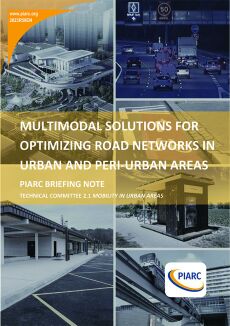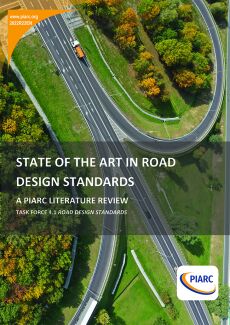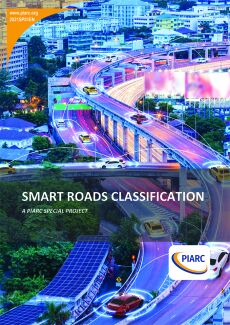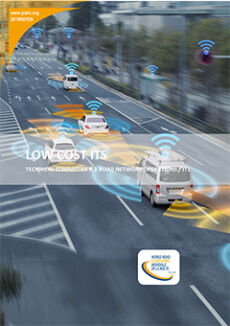Technical Reports Design of inter-urban roads
This page lists technical reports of PIARC in the field of design of inter-urban roads. These publications are classified chronologically.
-
Multimodal Solutions for Optimizing Road Networks in Urban And Peri-Urban Areas

Mobility in urban areas faces complex problems which need to be managed within spatial and budgetary constraints. It is therefore necessary to optimize the use of road networks through better integration with other forms of transport (rail, active modes, etc.). Multimodality giving rise to the concept of " multimodality " . Integrated multimodal transportation systems are large in scale and high in complexity. Their effective, coordinated planning and management is a major challenge [...]
-
New Mobility and Road Infrastructure

PIARC has been concerned, for some time, about the challenges and opportunities presented by Connected and Autonomous Vehicles for Road Network Operators. These were explored by two Task Forces between 2018 and 2020, and the rapid and disruptive arrival of a wider range of mobility technologies, digital and service concepts required a review and update. The new forms of mobility refer both to the new vehicle types and technologies that are beginning to circulate on streets and highways, as [...]
-
State of the Art in Road Design Standards - Literature Review

This literature review is the first of two planned publications of PIARC Task Force 4.1 “Road Design Standards” in the period 2020 – 2022. PIARC considered importance of comparison international road design standards to check their updated status and the degree of their readiness to face the forthcoming innovations in the road mobility. The report presents a literature review in the field of road design standards based on reviewing reports, guidelines, and research papers on the subject matter. [...]
-
Smart Roads Classification

Traditionally, road network classification systems have focused on two fundamentally opposite dimensions: mobility and accessibility. These classification systems have been adapted to the variable circumstances of countries or regions. However, with Connected and Automated Vehicles (CAVs) coming into play, the situation has become quite more challenging than before. Current CAVs consist of diverse Advance Driver Assistance Systems (ADAS) that assist humans in the driving task. The automotive industry [...]
-
Low Cost ITS - Technical Report

The Low Cost ITS concept was introduced for the first time during PIARC 2012-2015 cycle. The concept described ITS services that were attractive to resource limited or Low- and Middle-Income Countries (LMICs). This was possible because of the recent emergence of inexpensive technological solutions including information systems based on the collection of probe vehicle data or information harvesting from social networks-based software applications. However, the concept was not formally defined. Upon [...]
1 / 18
- Previous
- Next